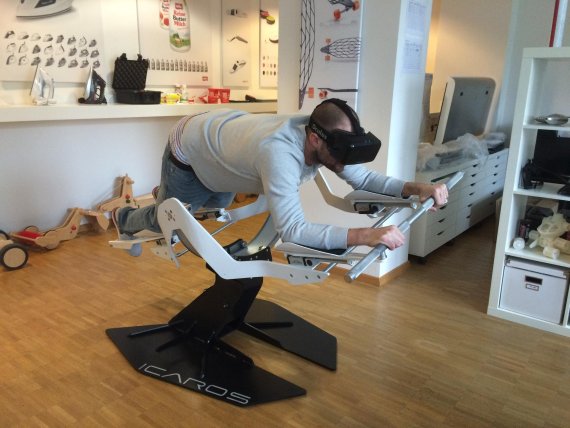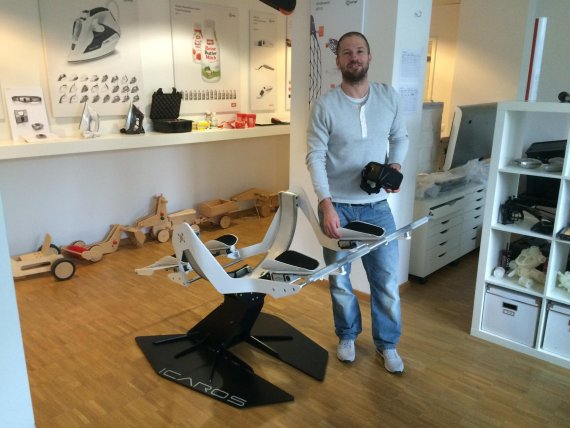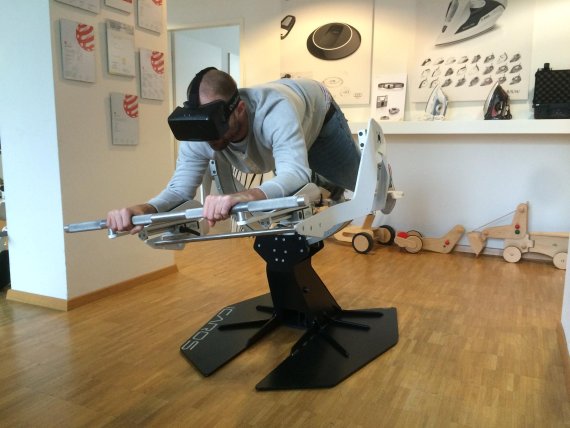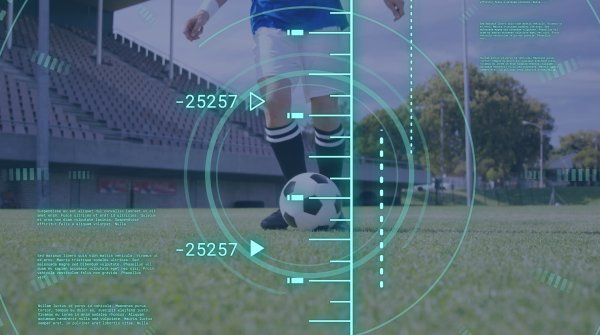
ICAROS is a futuristic frame made of shiny metal, on which the athlete/video gamer/pilot can make his rounds in the virtual sky like a Playstation or XBox, but quite incidentally something for fitness. Because he has to steer and steer with muscle power - and that's quite strenuous, as I soon learn.

First of all, dry flying is the order of the day. With the small plastic controller in my hand, I test out how my inputs affect the ICAROS aircraft. Up, down, a few turns and slowly I increase the flying speed. Everything actually runs like clockwork in virtual reality - but I'm still standing with both feet on the ground.
The virtual reality fitness challenge
But then it's off to the ICAROS. It's the second prototype, and unlike number three, it still has no limits on the axes. I learn quite quickly what that means.
First, I test out how to keep my balance on ICAROS. Smooth movement, smooth reaction. The metal sled, on which I kneel stretched out on my stomach, reacts to the slightest movement and transmits the pilot's action directly to the screen of the virtual reality goggles via the controller.
So far, so good. But now the ICAROS shows its true colors. High above the virtual glacier, I try to enter a gentle descent on the sports device in order to reach the programmed canyon.
Descending with virtual reality goggles
But without the axis limitation, the gentle descent turns into a breakneck dive, and instead of an elegant balancing act, in a fraction of a second I am stuck upside down in the ICAROS in a panic, my face just above the ground, and have to be "rescued" by ICAROS inventor Sebastian Scholl.

For the next few attempts, I slowed down a bit and avoided hectic movements. After a good ten minutes, the flight maneuvers become increasingly imprecise, and there's only one reason for that: I'm simply running out of strength.
Virtual sport: as exhausted as after two hours in the gym
Exhausted and sweaty like after two hours in the gym, I descend and have to admit that the virtual flight really felt real. Should Scholl and his ICAROS team implement the planned drone opponents and multiplayer mode as skillfully as their previous work, then ICAROS should be a lot of fun for many people.
Well, at least until the next day. Because even if the adventures are contested in the virtual world - the aching muscles afterwards are damn real and painful.
 SportsTechUnlocking the Future of Sports with AI
SportsTechUnlocking the Future of Sports with AI
- ISPO awards
- Mountain sports
- Bike
- Design
- Retail
- Fitness
- Health
- ISPO Job Market
- ISPO Munich
- ISPO Shanghai
- Running
- Brands
- Sustainability
- Olympia
- OutDoor
- Promotion
- Sports Business
- ISPO Textrends
- Triathlon
- Water sports
- Winter sports
- eSports
- SportsTech
- OutDoor by ISPO
- Heroes
- Transformation
- Sport Fashion
- Urban Culture
- Challenges of a CEO
- Trade fairs
- Sports
- Find the Balance
- Product reviews
- Newsletter Exclusive Area
- Magazine





